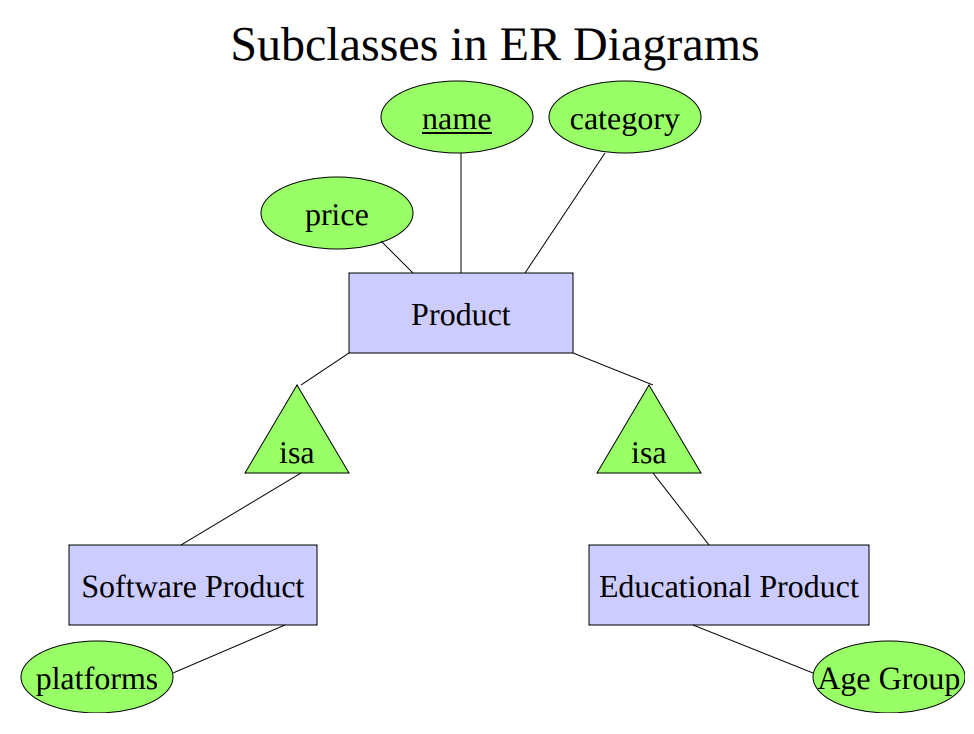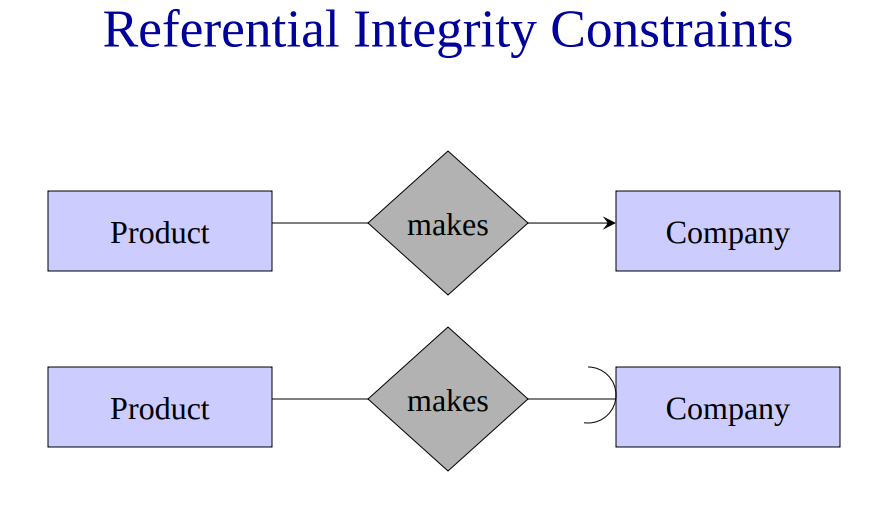ER Model Study Note

Table of Contents
ER Model
- Gives us a language to specify
- what information the db must hold
- what are the relationships among components of that information
- Proposed by Peter Chen in 1976
- What we will cover
- basic stuff
- subclasses
- constraints
- weak entity sets
- design principles
Basic Stuff
Entities and Attributes
-
Entities
- real-world objects distinguishable from other objects
- described using a set of attributes
-
Attributes
- each has an atomic domain: string, integers, reals, etc.
- Entity set: a collection of similar entities
Relationships
- Modeled as a mathematical set
- Binary and multiway relationships
- Converting a multiway one into many binary ones
- Constraints on the degree of the relationship
- many-one, one-one, many-many
- limitations of arrows
- Attributes of relationships
- not necessary, but useful
Subclasses
Subclasses in ER Diagrams
- Assume subclasses form a tree.
- I.e., no multiple inheritance.
- Isa triangles indicate the subclass relationship.
- Point to the superclass.
Constraints
- A constraint = an assertion about the data in the database that must be true at all times
- Part of the database schema
- Very important in database design
- To ensure data integrity
Modeling Constraints
Finding constraints is part of the modeling process.
Commonly used constraints:
Keys: social security number uniquely identifies a person. Single-value constraints: a person can have only one spouse. Referential integrity constraints: if you work for a company, it must exist in the database. Domain constraints: peoples’ ages are between 0 and 150. General constraints: all others (e.g., at most 50 students can enroll in a class)
Why Constraints are Important?
- Give more semantics to the data
- help us better understand it
- Allow us to refer to entities (e.g., using keys)
- Enable efficient storage
- E.g., store ages as tiny integer (1 byte for example)
- Enable efficient lookup
- E.g., creating an index on key
Keys in ER Diagrams

- Every entity set must have a key
- Why? Because entities of an entity set need “help” to identify them uniquely.
- A key can consist of more than one attribute
- There can be more than one key for an entity set
- one key will be designated as primary key
- Requirement for key in an isa hierarchy
- Root entity set has all attributes needed for a key

Single Value Constraints (Value-based Constraints)
- An entity has at most one value for a given attribute or relationship
- An attribute of an entity set has a single value or NULL
- i.e., the value may be missing
- A many-one relationship also implies a single value constraint
Referential Integrity Constraint
- Referential Integrity constraint: exactly one value exists in a given role
- An attribute has a non-null, single value
- this can be considered a kind of ref. int. constraint
- However, we more commonly use such constraints to refer to relationships
- In some formalisms we may refer to other object but get garbage instead
- e.g. a dangling pointer in C/C++
- The Referential Integrity Constraint on relationships explicitly requires a reference to exist

Weak Entity Sets
Entity sets are weak when (some or all of) their key attributes come from other entity sets to which they are related.
This happens when:
- part-of relationships
- splitting n-ary relationships to binary.

Design principles
- be faithful
- avoid redundancy
- KISS